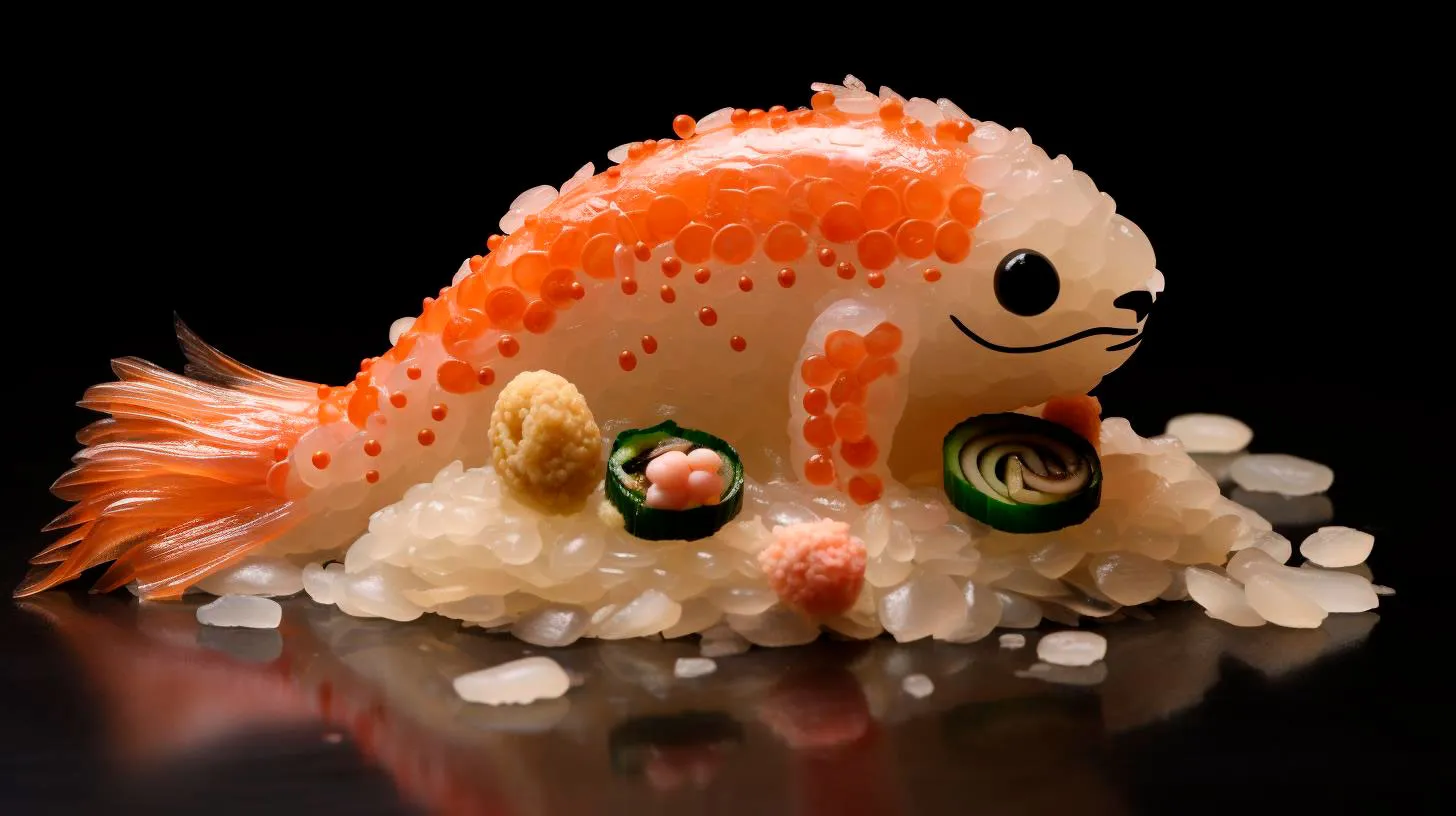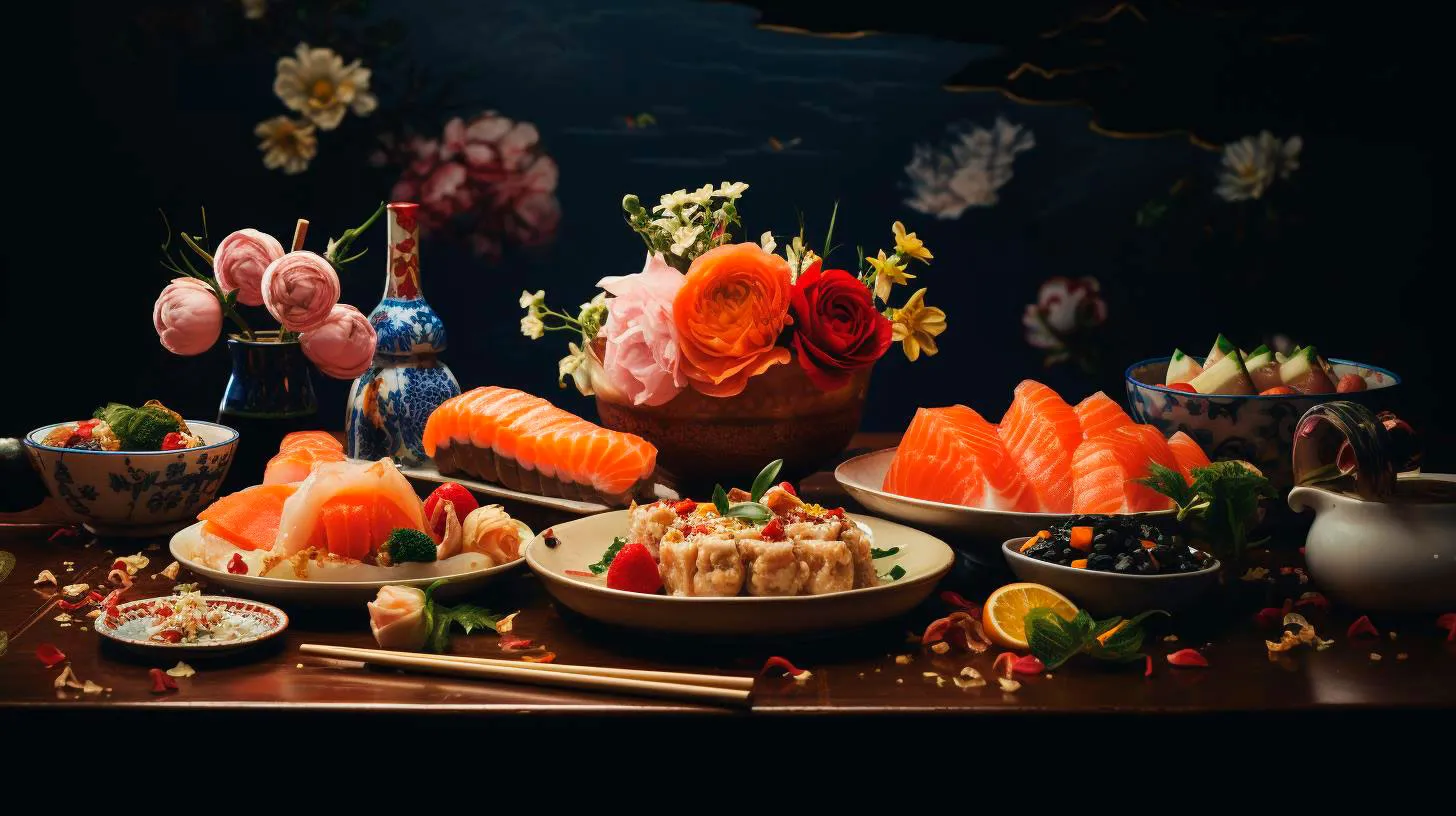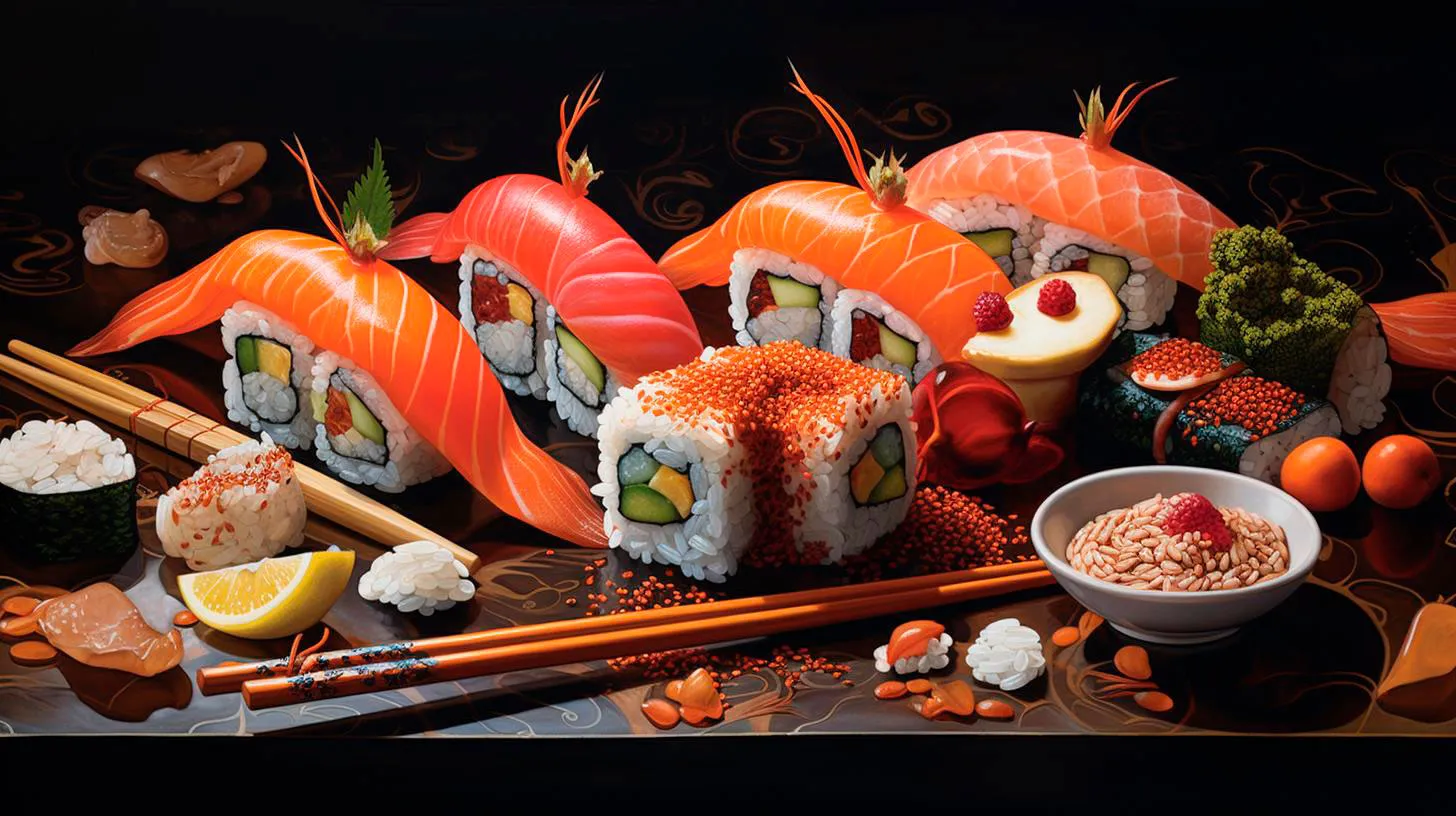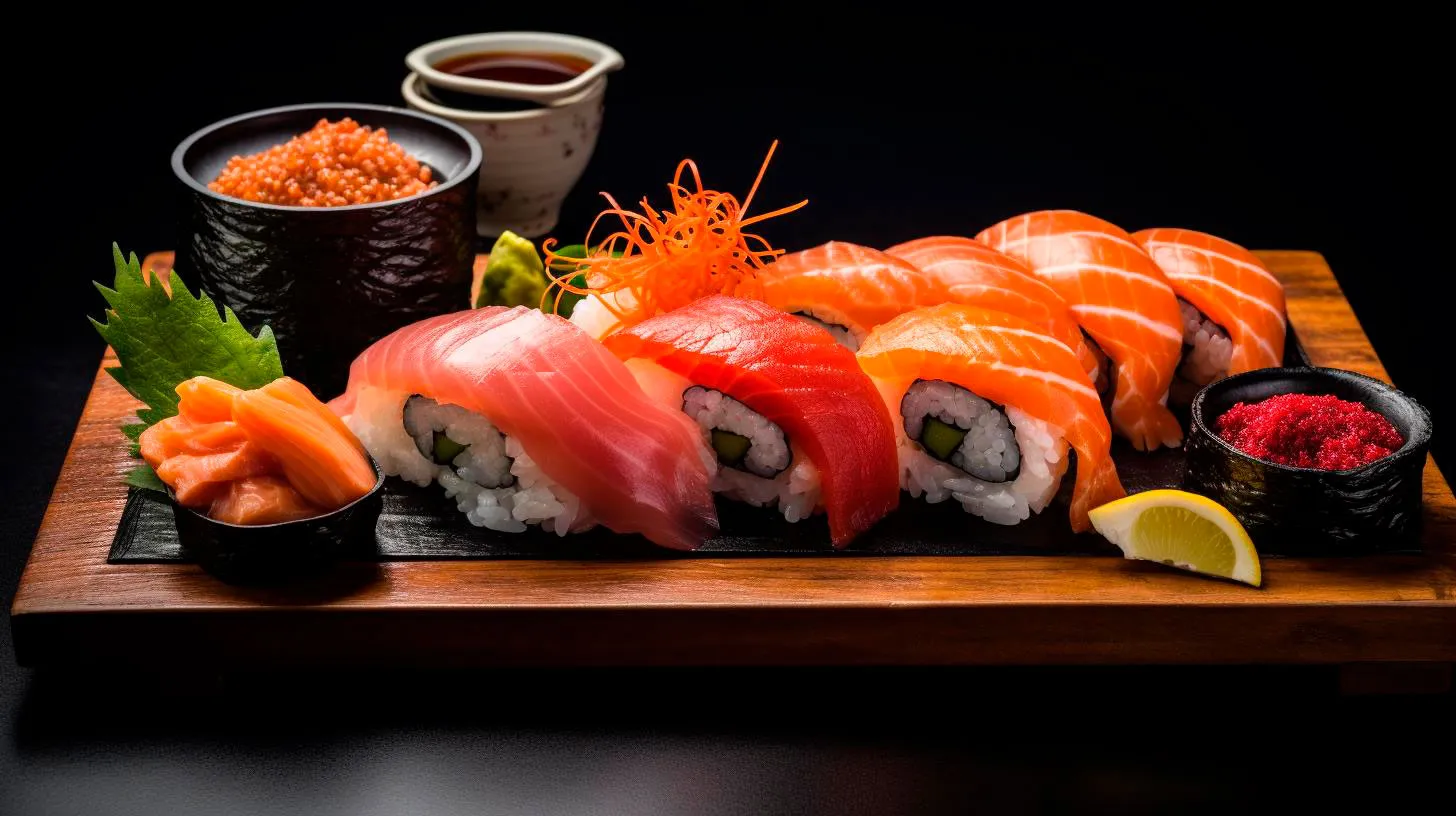Sushi: A Fusion of Flavors in Traditional Festivities
In this article, we will explore the rich history, diverse types, and cultural significance of sushi, highlighting its versatility as it merges flavors in traditional festivities.
A Brief History of Sushi
Sushi, as we know it today, has a long history that dates back to the 7th century in Southeast Asia. Originally, sushi was a preservation method, invented by farmers who salted and fermented fish to extend its shelf life. Over time, this technique evolved, and during the 17th century, the famous “nigiri sushi” was born in Japan, featuring vinegared rice topped with fresh fish.
However, it was only in the 19th century that sushi grew in popularity outside Japan. As international trade expanded, sushi became an influential ambassador of Japanese culture. Today, it has become a global phenomenon, with countless sushi bars and restaurants delighting taste buds worldwide.
The Many Faces of Sushi
Sushi is not just a single dish; it encompasses a wide range of styles and flavors. Let’s take a look at some popular forms of sushi:
- Nigiri: The most recognized form of sushi, nigiri consists of a small mound of vinegared rice topped with a thin slice of raw or cooked fish.
- Maki: Maki sushi, commonly known as sushi rolls, involves rolling vinegared rice, fish, and vegetables in seaweed sheets called nori.
- Sashimi: Sashimi refers to thinly sliced raw fish or seafood served without rice. It highlights the freshness and taste of the fish.
- Temaki: Temaki, or hand rolls, are cone-shaped sushi rolls with a variety of fillings, wrapped in nori.
- Chirashi: Chirashi sushi features a bowl of sushi rice topped with a colorful assortment of sashimi, vegetables, and other ingredients.
Sushi can be enjoyed with soy sauce and wasabi, providing an extra kick to its already delightful flavors. The versatility of sushi allows for endless combinations, making it suitable for everyone, from seafood lovers to vegetarians.
Cultural Significance and Festive Flavors
Sushi is not only a culinary delight but also holds immense cultural significance in Japan. It is closely associated with various traditional festivities and celebrations. Let’s discover how sushi blends into these festivities:
New Year Celebrations
In Japan, New Year celebrations, known as Oshogatsu, are one of the most significant events of the year. Sushi plays an essential role during these festivities, symbolizing good luck and prosperity for the coming year. Traditional New Year sushi, called Osechi, consists of colorful boxes filled with assorted sushi and other delicacies, each carrying a unique meaning.
Cherry Blossom Season
The arrival of cherry blossoms heralds the arrival of spring in Japan. During this vibrant season, people gather for hanami parties under cherry blossom trees. Sushi is a common food served during these picnics, bringing flavors that complement the joyous atmosphere. The delicate taste of sushi harmonizes with the beauty of the blossoms, creating a truly memorable experience.
Weddings and Special Occasions
Sushi is often served during weddings and other celebratory events. Its aesthetic presentation and exquisite flavors make it an ideal choice for such occasions. Sushi platters with an array of nigiri, maki, and sashimi showcase the chef’s craftsmanship while allowing guests to savor a variety of tastes. Sushi’s presence in these special moments adds elegance and sophistication, impressing both the eyes and taste buds.
Key Takeaways
Sushi, the fusion of flavors in traditional festivities, truly captures the essence of Japanese culture and cuisine. Here are the key takeaways from our exploration:
- Sushi originated in the 7th century as a preservation method, but has now become a global culinary phenomenon.
- The different types of sushi, such as nigiri, maki, sashimi, temaki, and chirashi, offer a diverse range of flavors and presentation styles.
- Sushi plays a significant role in traditional Japanese festivities like New Year celebrations and cherry blossom season.
- Its aesthetic presentation and versatile flavors make sushi an ideal choice for weddings and other special occasions.
- Sushi’s popularity continues to grow worldwide, attracting food enthusiasts with its unique fusion of flavors and cultural significance.
So, the next time you indulge in sushi, take a moment to appreciate the rich history and cultural significance behind this delightful dish. Let it transport you to the traditional festivities of Japan, where the fusion of flavors creates an unforgettable dining experience.
Sushi: The Culinary Heritage that Elevates Traditional Japanese Celebrations
The History of Sushi
Sushi, meaning “sour rice,” was initially introduced in Japan as a means to preserve fish by fermenting it with salt. Over the centuries, this preservation method transformed into a refined culinary art form. The Edo period (1603-1868) saw sushi become increasingly popular in Japanese society, with the creation of nigiri sushi, the most recognized type of sushi today, by Hanaya Yohei. The use of vinegar-soaked rice instead of fermented fish enhanced the flavor and texture, giving birth to sushi as we know it today.
The 19th century witnessed the rise of traditional sushi bars, known as “sushi-ya,” which are still prevalent in Japan. With sushi chefs, or “itamae,” showcasing their artistry by selecting the freshest ingredients and carefully crafting each piece, sushi became an esteemed culinary tradition.
Sushi: A Staple in Japanese Celebrations
In Japan, sushi plays a significant role in traditional celebrations, such as weddings, birthdays, and festivals. It symbolizes good luck, prosperity, and joy. Here are some key reasons why sushi has become an integral part of Japanese celebrations:
- Symbolism: Sushi’s aesthetically pleasing presentation reflects the commitment to beauty and harmony in Japanese culture. Each ingredient represents a profound meaning, like fish symbolizing abundance and rice signifying fertility.
- Sharing and Togetherness: Sushi is often shared among family and friends, fostering a sense of togetherness and unity during celebratory occasions.
- Exquisite Flavors: The delicate balance of flavors in sushi, ranging from savory to tangy, delights the palate and offers a unique and memorable dining experience.
The Global Sushi Sensation
Over the past few decades, sushi has transcended its cultural boundaries and gained immense popularity worldwide. Let’s explore why sushi has become an international sensation:
- Health Benefits: Sushi is widely regarded as a healthier alternative to many fast-food options. It is low in saturated fats and high in omega-3 fatty acids, making it a nutritious choice.
- Diversity: Sushi has adapted to local tastes and ingredients in various countries. From California rolls to fusion sushi, it has diversified to suit different palates, attracting a wide range of consumers.
- Social Media and Pop Culture: Sushi’s visually appealing presentation and the rise of social media have contributed to its popularity. People often share captivating sushi photos, enticing others to try it as well.
The Art of Making Sushi
Becoming a skilled sushi chef requires years of training and dedication. Here are some key takeaways about the art of making sushi:
- Precision and Technique: Sushi chefs master the art of precision in crafting each piece. They meticulously slice fish, control rice proportions, and expertly assemble sushi using nimble fingers.
- Fresh and Quality Ingredients: The key to exceptional sushi lies in using the freshest ingredients. Sushi chefs prioritize sourcing high-quality fish and incorporating seasonal produce for optimal flavor.
- Balance and Presentation: Sushi chefs focus on creating a harmonious balance of flavors and textures in each bite. Additionally, the visual presentation of sushi is paramount, emphasizing elegance and beauty.
Conclusion
Sushi’s journey from a preservation method to a celebrated culinary delight showcases the rich cultural heritage of Japan. Its presence in traditional Japanese celebrations and global popularity highlights its significance and enduring appeal. Whether you savor sushi for its health benefits, diverse flavors, or visual allure, there’s no denying its place as a cherished part of Japanese culinary tradition.
From Hanami to Matsuri Sushi: The Indispensable Role in Japanese Festivals
While Matsuri encompass a wide range of events, one element that remains indispensable across these festivals is none other than Matsuri Sushi, a culinary delicacy that adds a delicious touch to the festivities. Let’s dive into the fascinating world of Japanese festivals and the indispensable role of Matsuri Sushi.
The Significance of Japanese Festivals
Japanese festivals play a crucial role in the country’s cultural fabric. They provide a platform for people to come together, celebrate, and honor their traditions. These festivals are often steeped in history, religion, and folklore, reflecting the deep-seated beliefs and customs of the Japanese people. From grand fireworks displays to intricate processions and vibrant performances, Japanese festivals offer a kaleidoscope of colors, sounds, and flavors that appeal to locals and visitors alike.
Vibrant Tradition and Matsuri Sushi
In the realm of Japanese festivals, one cannot overlook the significance of Matsuri Sushi. This delicacy serves as a delectable representation of the gastronomic culture deeply embedded within these celebrations. Matsuri Sushi, also known as festival sushi, showcases the culinary excellence and artistry of Japanese cuisine.
The Unique Features of Matsuri Sushi
- Matsuri Sushi is prepared using fresh, high-quality ingredients that highlight the flavors of the season.
- The sushi rice is expertly seasoned with vinegar, creating a perfect balance of flavors.
- Various toppings, such as succulent seafood, pickled vegetables, and thinly sliced omelet, adorn the sushi, adding texture and visual appeal.
- Matsuri Sushi is often served in bite-sized portions, making it convenient to enjoy while exploring festival grounds.
- The variety and creativity of Matsuri Sushi are endless, with each festival showcasing its unique twist on this beloved dish.
The Advantages of Matsuri Sushi at Japanese Festivals
The presence of Matsuri Sushi at Japanese festivals offers numerous advantages that contribute to the overall experience for attendees:
- Cultural immersion: Matsuri Sushi allows visitors to truly embrace Japanese culture, offering a glimpse into the country’s rich culinary heritage.
- Convenience: Bite-sized Matsuri Sushi pieces are easy to eat while strolling through festival grounds, allowing visitors to savor delicious flavors while taking in the vibrant atmosphere.
- Food diversity: From traditional nigiri sushi to regional specialties, Matsuri Sushi presents an array of options, catering to different tastes and preferences.
- Visual appeal: The artistry displayed in Matsuri Sushi makes it a feast for the eyes. Intricate designs and vibrant ingredients create visually stunning combinations that are too beautiful to resist.
Key Takeaways
Japanese festivals are a vibrant celebration of culture and traditions, and Matsuri Sushi plays an essential role in enhancing this experience. The combination of fresh ingredients, skilled craftsmanship, and cultural significance makes Matsuri Sushi an indispensable part of the festivities. Whether you are attending the famous cherry blossom viewing event, Hanami, or the lively summer festivals, Matsuri Sushi promises to delight your senses and leave a lasting impression.
Experience the magic of Japanese festivals and indulge in the exquisite flavors of Matsuri Sushi. Join the celebration and savor the best of Japan’s culinary heritage.
Unveiling the Symbolism of Sushi: An Integral Part of Cultural Celebrations
A Perfect Blend of Tradition and Flavors
1. Rich History: Sushi has a history that dates back over a thousand years. It originated as a way to preserve fish in fermented rice, evolving over time to become the bite-sized, aesthetically pleasing sushi we know today.
2. Symbol of Prosperity: In Japanese culture, sushi has become a symbol of prosperity and good fortune. Its vibrant colors and exquisite presentation make it a popular choice for special occasions and celebrations.
3. Connection to Nature: Sushi often features fresh fish, showcasing the close connection between the Japanese people and the sea. It symbolizes their respect for nature and the importance of sustainability.
The Art of Sushi Making
1. Precision and Skill: Sushi making requires great precision and skill. From cutting the fish to molding the rice, every step is carefully executed to ensure a balance of flavors and textures.
2. Harmonious Presentation: The presentation of sushi is an art form in itself. The colors, textures, and shapes are meticulously arranged to create an aesthetically pleasing dish that is not only delicious but also visually captivating.
3. Cultural Influences: Sushi-making techniques have been influenced by various aspects of Japanese culture, such as the concept of “wabi-sabi,” which emphasizes imperfection as a form of beauty. This philosophy is reflected in the rustic, handcrafted appearance of traditional sushi.
Sushi in Cultural Celebrations
1. New Year Celebrations: In Japan, sushi plays a vital role in New Year festivities. Known as “osechi-ryori,” a special assortment of sushi is prepared and shared among loved ones to welcome the new year with good fortune.
2. Weddings and Anniversaries: Sushi is often served at weddings and anniversaries, symbolizing good luck and happiness for the couple. It represents the hope of a prosperous and long-lasting union.
3. Cherry Blossom Viewing: During the annual cherry blossom season, many people gather to enjoy the beautiful scenery with a bento box or sushi platter. Sushi adds to the festive atmosphere and is often enjoyed alongside sake.
Key Takeaways
1. Symbolism: Sushi represents tradition, celebration, and art, making it an integral part of Japanese cultural celebrations.
2. Precision and Skill: The meticulous preparation and presentation of sushi highlight the precision and skill required to create this culinary masterpiece.
3. Cultural Significance: Sushi reflects the close relationship between the Japanese people and nature while embodying the country’s history and cultural values.
In conclusion, sushi goes beyond being a delectable dish – it holds profound symbolism in Japanese cultural celebrations. Whether it is served during New Year festivities, weddings, or cherry blossom viewings, sushi represents tradition, skill, and prosperity. Its preparation and presentation are a true art form, displaying the rich history and cultural significance of Japan. So, the next time you enjoy a plate of sushi, remember the hidden meanings behind each carefully crafted piece.



